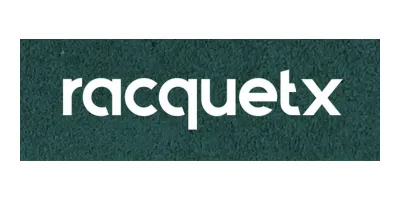Glice Synthetic Ice Rinks: Considerations for Installation, Maintenance, and Relocation

Ice sports have long been a source of joy, fitness, and competition for many. However, maintaining a traditional ice rink can be a challenging and resource-intensive endeavor, particularly in regions where the climate doesn’t naturally support it. Enter the game-changer: synthetic ice rinks. These innovative solutions, led by industry pioneers like Glice, offer the thrill of ice sports without the geographical limitations or high maintenance costs of traditional ice rinks.
In this article, we delve into the world of synthetic ice rinks, exploring the key considerations for their installation, maintenance, and relocation. Whether you’re a school, municipality, or commercial sports complex, this guide will equip you with the knowledge to make informed decisions about synthetic ice rinks, helping you offer a top-notch ice sports experience all year round. So, let’s glide into the details.
Understanding Synthetic Ice
Glice’s synthetic ice, made from high-density polyethylene, mimics the properties of natural ice, allowing for activities like ice hockey, figure skating, and general ice skating. The key difference? Glice synthetic ice can be used in any weather, without the energy costs associated with maintaining a natural ice rink.
Planning for Synthetic Ice Rink Installation
Before installing a synthetic ice rink, several factors need to be considered. The size and location of the rink will depend on the available space and intended use. Environmental considerations, such as drainage and sunlight exposure, can impact the longevity and performance of the rink. Additionally, legal and safety considerations, such as local building codes and the provision of adequate barriers, must be addressed.

Installation of Synthetic Ice Rinks
Site preparation
The installation process of a Glice rink begins with choosing a suitable location that can fit the rink, access routes, safety barriers, and spectator areas. The ground conditions are assessed for flatness, stability, and absence of sharp objects. For outdoor rinks, drainage and sunlight exposure are also considered.
Subfloor or Base
A Glice synthetic ice rink requires a level, firm foundation, which could be concrete, wood, or compacted earth or gravel. Certain synthetic ice systems come with a subfloor element for extra stability and surface leveling.
If the site isn’t flat, leveling measures such as topsoil removal, fill addition, or leveling tool usage are implemented. The choice of base—concrete, wood, or gravel—depends on the site conditions and the specific synthetic ice system.
Once the site is ready and the base is set, the installation of the synthetic ice panels can commence. This involves marking the rink dimensions, arranging the panels, and gathering necessary tools. Proper site preparation ensures a smooth installation and a high-quality rink.
The size of the rink depends on the use case:
- figure skating, 200 by 85 feet (international events, 200 by 100 feet)
- general ice skating, around 140 by 60 feet
- ice hockey, 200 by 85 feet (international, 200 by 100 feet)
- curling, 150 by 16.5 feet.
Installing Glice synthetic ice panels
The Glice synthetic ice panels, which come in various sizes, are then laid out and connected via a tongue-and-groove system or dovetail joints. It’s crucial to ensure the panels are properly aligned and connected to create a smooth, seamless surface. Safety measures, such as wearing protective equipment and following the manufacturer’s instructions, are vital during installation.



Sideboards or Dasher Boards
These are the barriers around the rink that keep the puck (in hockey) or the skaters within the rink area. They can be made of various materials, including plastic, aluminum, or steel, and often include protective padding.





Accessories and customization
Depending on the intended use of the rink, various accessories may be included, such as:
- Lighting system – essential for indoor rinks and outdoor rinks to ensure the safety of skaters even in the evening hours
- Scoreboard – excellent addition to any ice hockey rink
- Goal nets for hockey
- Marking lines or circles embedded in the panels for different sports (hockey, curling, etc.)
- Rental curling sets to monetize your synthetic ice rink
Maintenance of Synthetic Ice Rinks
Maintaining a Glice synthetic ice rink is a crucial aspect of ensuring its longevity and optimal performance. Here are the key elements of synthetic ice rink maintenance:
- Cleaning: Regular cleaning is essential to keep the surface in top condition. This involves removing debris such as leaves, dirt, and dust that can accumulate on the surface.
- Inspection: Regular inspections of the rink are necessary to identify any potential issues early. This includes checking for signs of wear and tear, such as scratches or chips in the panels.
- Panel Rotation: To ensure even wear and extend the lifespan of the rink, it’s recommended to rotate the panels periodically. This involves removing the panels and reinstalling them in different positions.
- Seasonal Maintenance: If the rink is outdoors, additional maintenance may be required depending on the season. This could include removing snow in the winter or leaves in the fall.
DIY Maintenance vs. Hiring Professional Services
The maintenance of a Glice synthetic ice rink can generally be handled in-house. Regular cleaning, inspection, and even resurfacing or panel rotation are tasks that can be performed by your own team with the right knowledge and tools. Glice provides comprehensive guidance on how to maintain their synthetic ice rinks, making it possible for your team to handle most of the maintenance tasks.
However, there are situations where professional help might be beneficial. If your rink is particularly large, if it sees heavy use, or if you’re dealing with significant damage or wear, professional maintenance services can provide a more thorough and efficient solution. Professionals have specialized equipment and extensive experience, which can be especially helpful for more complex tasks like panel rotation or resurfacing.
In addition, if your team is already stretched thin with other responsibilities, hiring professionals can save time and ensure the maintenance is done correctly and regularly.
Removal and Transportation of Synthetic Ice Rinks
There may be instances when your synthetic ice rink needs to be removed for reasons such as relocation, replacement, or disposal. In such cases, the process involves carefully disconnecting the panels to avoid damage. If disposal is necessary, it should align with local recycling or waste disposal regulations.
When it comes to relocating a synthetic ice rink, the panels require proper preparation and packing to prevent damage during transport. Panels should be laid flat, secured to prevent movement, and depending on the size and quantity, a truck or trailer may be needed. Whether you’re removing or relocating, handling the panels with care ensures their longevity and usability.
Relocating a synthetic ice rink vs. traditional ice rink
- Synthetic Ice Rinks: These rinks consist of interlocking panels that can be disassembled, transported, and reassembled relatively easily. The panels are lightweight and durable, making them easy to handle and resistant to damage during transport. Additionally, because synthetic ice doesn’t require a cooling system, there’s no need to worry about transporting and reinstalling complex refrigeration equipment. This makes the relocation process quicker, less labor-intensive, and more cost-effective.
- Traditional Ice Rinks: In contrast, traditional ice rinks are much more challenging to relocate. They require a cooling system to keep the ice frozen, which involves complex refrigeration equipment that can be difficult and expensive to move. The ice itself cannot be relocated, so a new rink has to be built from scratch at the new location, which involves flooding and freezing multiple layers of water – a time-consuming and resource-intensive process.
In summary, the modular and portable nature of synthetic ice rinks, like those from Glice, makes them far easier and more practical to relocate compared to traditional ice rinks.

Project Showcase: Glice Rink Installation in Chula Vista, CA
The city of Chula Vista, located in Southern California, has long struggled with the climate challenges of maintaining a traditional ice rink. For a decade, local residents missed out on the joy of ice skating due to these weather constraints. Otay Ranch Town Center, a local mall, decided to address this issue by exploring the option of a synthetic ice rink.
In his search for the best artificial ice providers, they discovered Glice and were instantly attracted to the superior quality of their products. Recognizing the potential, they saw Glice’s synthetic ice rinks as the perfect solution to bring ice skating back to the residents of Chula Vista, regardless of the warm Southern California weather.
The decision to invest in a 1,323 square foot Eco-Ice rink from Glice was driven by two key factors: cost-effectiveness and environmental responsibility, both of which resonate deeply with the residents of Chula Vista.
Benefits of the Glice synthetic ice rink:
- The panels are consistently optimized to provide a realistic ice skating experience.
- It does not depend on water or electricity.
- It is versatile, quick to set up, and easily adapted to different surroundings.
Visitors to the Otay Ranch Mall have been pleasantly surprised by the smoothness of the skating experience on the synthetic ice. The durable panels promise years of use, making the rink a sustainable attraction for the venue. Chula Vista’s experience with Glice’s synthetic ice rink demonstrates that ice skating isn’t just a winter activity, but a year-round delight that everyone can enjoy, regardless of the climate.
Conclusion
Synthetic ice rinks offer a versatile and sustainable solution for ice sports facilities. By understanding the key considerations for installation, maintenance, removal, and transportation, you can ensure a successful synthetic ice rink project. Whether you’re a high school, college, university, municipality, or commercial sports complex, a synthetic ice rink could be the next big step in your sports facilities journey.
Learn more about synthetic ice rinks from Glice, the market’s leading provider: glicerink.com











